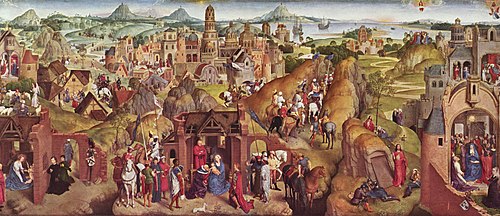Iconographynoun
A set of specified or traditional symbolic forms associated with the subject or theme of a stylized genre of art.
Iconographynoun
The art of representation by pictures or images; the description or study of portraiture or representation, as of persons.
Iconographynoun
The study of representative art in general.
Iconographynoun
The art or representation by pictures or images; the description or study of portraiture or representation, as of persons; as, the iconography of the ancients.
Iconographynoun
The study of representative art in general.
Iconographynoun
the images and symbolic representations that are traditionally associated with a person or a subject;
Iconography
Iconography, as a branch of art history, studies the identification, description and interpretation of the content of images: the subjects depicted, the particular compositions and details used to do so, and other elements that are distinct from artistic style. The word iconography comes from the Greek εἰκών () and γράφειν ( or to draw).
Iconologynoun
The study of icons in art or art history.
Iconologynoun
The discussion or description of portraiture or of representative images. Cf. Iconography.
Iconologynoun
the branch of art history that studies visual images and their symbolic meaning (especially in social or political terms)
Iconology
Iconology is a method of interpretation in cultural history and the history of the visual arts used by Aby Warburg, Erwin Panofsky and their followers that uncovers the cultural, social, and historical background of themes and subjects in the visual arts. Though Panofsky differentiated between iconology and iconography, the distinction is not very widely followed, .






